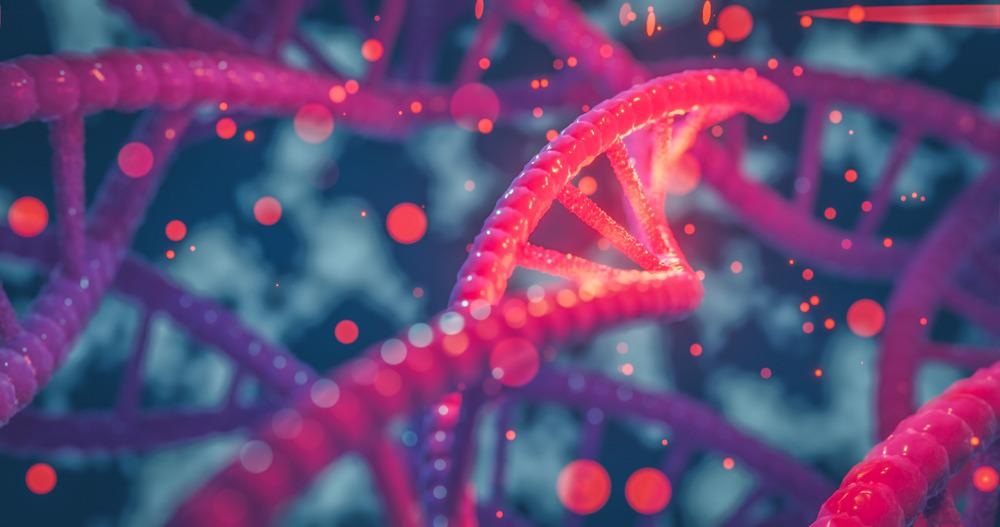After death, the processes of the body don’t immediately halt. Contrary to the idea that when the heart stops all functions immediately cease, recent research has revealed a more complex post-mortem story. By quantifying the selective and time‑dependent changes in the activity and gene expression of specific cells in human post-mortem samples, researchers have enabled a more accurate interpretation of data that accounts for the post-mortem interval.

Image Credit: CI Photos/Shutterstock.com
Thanatotranscriptomic research has revealed that after death, genes are both selectively up-and down-regulated. Detailing mRNA transcript abundance, as well as genes expression patterns in post-mortem tissue, the thanatotranscriptome can utilize RNA degradation to estimate the postmortem interval. Beyond applications in forensic science, this type of transcriptome profiling could prove critical to interpreting research on human brain disorders that utilize post-mortem samples.
Time‑dependent changes in post-mortem human neocortex
Post-mortem tissue samples are a valuable and widely used resource for investigating patterns of gene expression. Often used to find treatments and potential cures for various disorders, post-mortem tissue samples can support the validation of therapeutic targets. However, understanding key differences in gene expression profiles of fresh and post-mortem tissues are vital to improving the ability of research to translate to clinical application.
The process of an organism dying triggers a cascade of events that cause cell death and autolysis. Post-mortem gene expression profiles, taken at key intervals, detail the alterations in mRNA that instruct these cellular changes in response to death. By bridging the gap with post-mortem tissue, researchers can account for morphological and genetic differences present in post-mortem tissue.
Post-mortem brain tissue from healthy and diseased individuals reveals marked differences in transcriptional patterns compared to tissue isolated immediately following surgical removal. By measuring genome-wide transcription as a function of time, researchers revealed a selective reduction in neuronal-activity dependent transcripts; as well as, increases in astroglial and microglial gene expression.
Differences in post-mortem and “fresh” tissue sample
To determine the age of a sample or the time since deposition, forensic science technologies often analyze the time-dependent degradation of biomolecules such as DNA or RNA. However, whole transcriptome sequencing of post-mortem brain tissue reveals this process may not be as linear as originally thought.
Activity-dependent genes were identified as the most susceptible to postmortem RNA degradation. Of 500 genes reported to be most reduced in postmortem samples, activity-dependent genes were enriched by 4 times more than would be expected for chance (enrichment of 4.25 with a hypergeometric p-value<1E−11). Reciprocally to this, a cluster of almost 500 genes (predicted to be glial) was seen to increase across stimulated post-mortem intervals.

Image Credit: TheVisualsYouNeed/Shutterstock.com
Gene expression as a function of time
During the stimulated post-mortem, changes to cell morphologies and gene expression patterns were documented. In neurons, swelling and the loss of staining were observed at 2 hours; by 12 hours the neurons demonstrated loss of nuclear detail and by 24 hours the majority of neurons were degraded. In contrast, micro-and astroglial processes greatly expanded during simulated post-mortem intervals.
Between 2 and 4 hours, microglia became activated, with increased outgrowth peaking at 12 hours. Similarly, astrocytes displayed a highly heterogeneous staining pattern suggestive of an outgrowth in processes, continuing through to 12 hours. At 24 hours, astrocyte cell bodies were no longer identifiable and microglia were rounded. This enlargement in glial cells was considered to not be “too surprising given that they are inflammatory and their job is to clean things up after brain injuries like oxygen deprivation or stroke”, according to co-author Dr. Jeffrey Loeb.
The impact on existing neurological and psychiatric data obtained from post-mortem tissue
Understanding the fluctuations in transcription that occur post-mortem will help inform more accurate research for many neuropsychiatric disorders. By quantifying post-mortem gene expression and/or cell activity, researchers can more easily account for changes in tissue compared to fresh samples.
While Loeb believes this finding does not mitigate the work of current and existing human tissue research programs it will allow researchers to take into account the post-mortem interval and “reduce the magnitude of these changes”.
Sources:
- Dachet, F., et al. (2021) Selective time-dependent changes in activity and cell-specific gene expression in human postmortem brain. Scientific Reports. doi:10.1038/s41598-021-85801-6
- ‘Zombie’ genes? Research shows some genes come to life in the brain after death: Post-mortem changes may shed light on important brain studies. [Online] ScienceDaily. Available at: www.sciencedaily.com/releases/2021/03/210323131230.htm (Accessed on 15 December 2021)
- Haas, C., et al. (2021) Forensic transcriptome analysis using massively parallel sequencing. Forensic Science International: Genetics. doi.org/10.1016/j.fsigen.2021.102486.
Further Reading
Last Updated: Feb 25, 2022